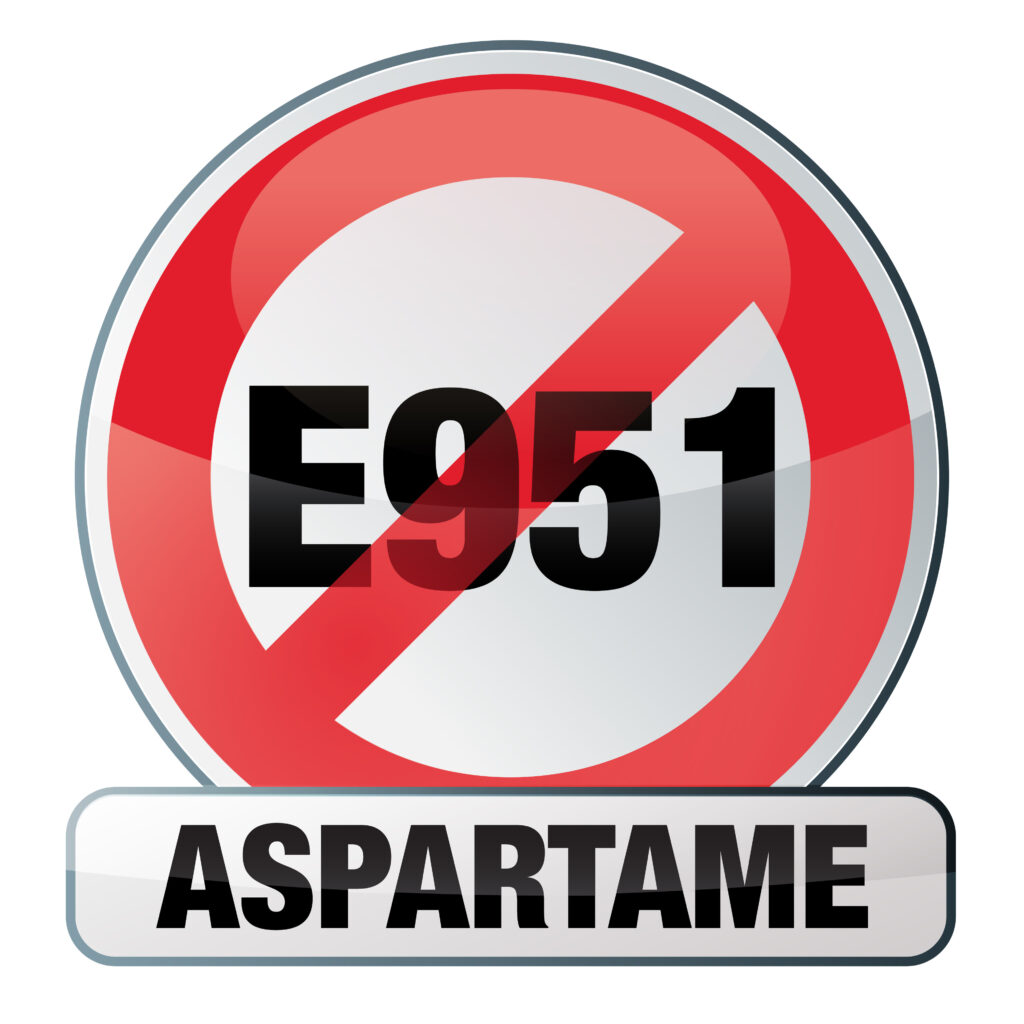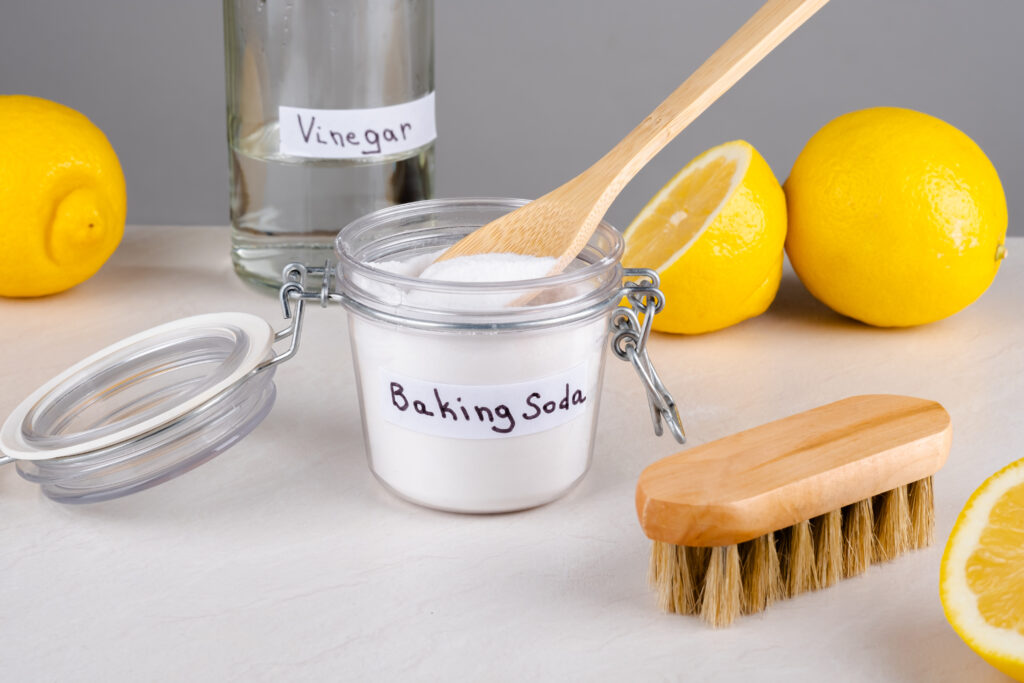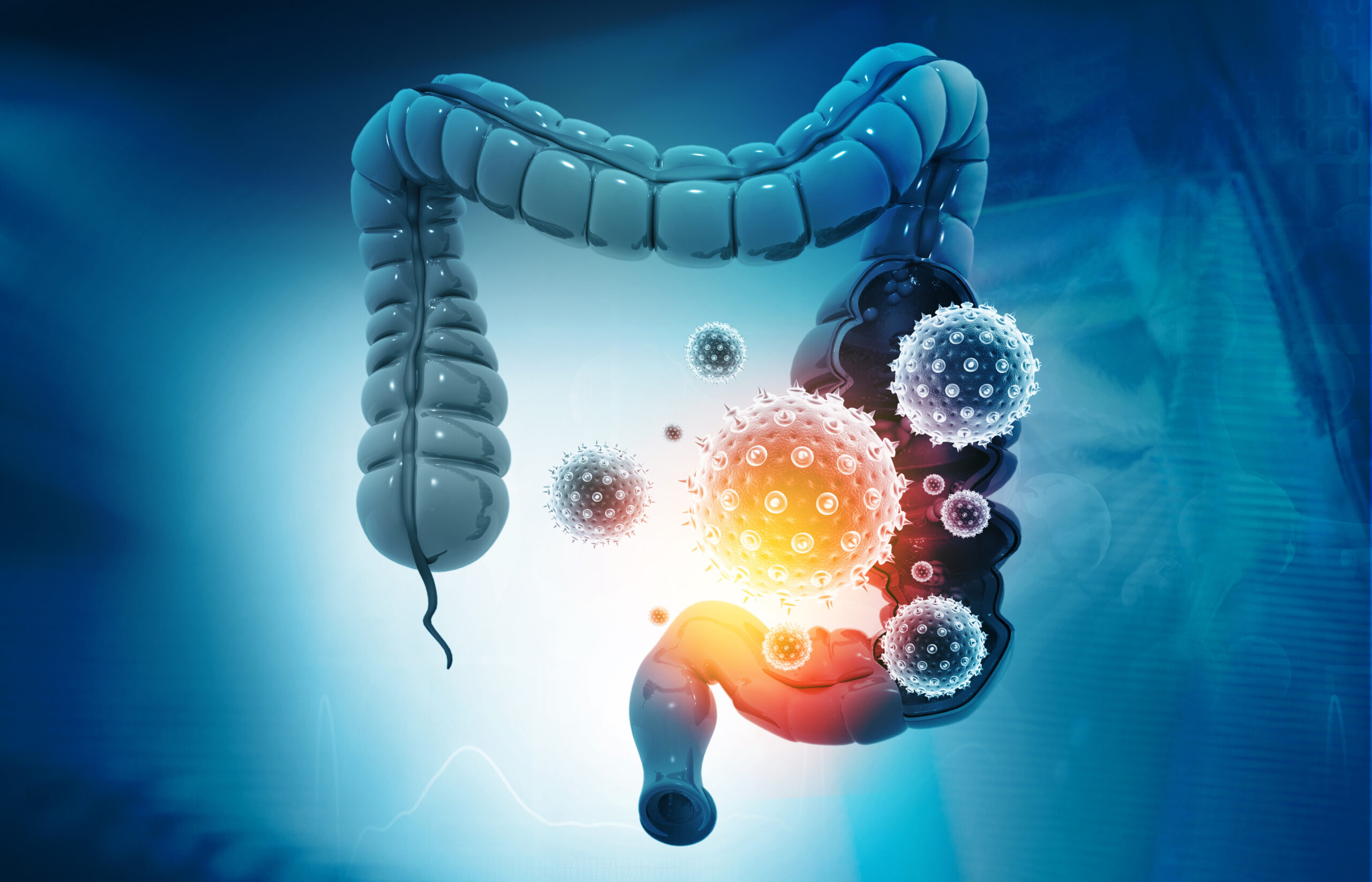Common Toxic Products You Should Avoid
In today’s post, I present a compilation of common toxic products I have been warning people about on my YouTube channel. I also discuss a few healthy alternatives. This list of toxic products is far from exhaustive, as nearly every commercial product produced nowadays is harmful to our health. Once you realize which products are the most toxic, collectively avoiding them will greatly reduce your toxic load.
Common Toxic Products You Should Avoid – Products That Contain Seed Oils
Seed oils or vegetable oils are derived from seeds such as soy, sunflower, canola, and corn. Seed oils are included in nearly all processed foods and restaurant food. In short, they are difficult to avoid if you aren’t cooking for yourself. The consumption of seed oils has been linked to a long list of health risks. The main concern is that consuming seed oils leads to chronic inflammation that drives degenerative diseases.1 2
Just go down the chips, cookies, and crackers aisle at the grocery store and read the ingredients. Nearly all of those products contain vegetable oils. To save yourself some time, don’t bother reading products that have a long list of ingredients. It is safe to assume that these products are full of artificial ingredients, chemicals, and rancid, seed-based oils.3 Search for the options that are certified organic and either contain olive oil, avocado oil, or coconut oil.
Common Toxic Products You Should Avoid – Coca-Cola And Other Sodas
Coca-Cola contains high levels of phosphoric acid, which is used to give the drink its tangy flavor. With a pH level of 2.37, Coca-Cola is highly acidic and has adverse effects on our body. If you consume only two cans of Coca-Cola you need to consume around 30 glasses of water to neutralize that acid.4 Since no one is going to do that, the body’s buffer system has to neutralize the acid by pulling calcium out of the bones. Over time, leaching calcium from the bones makes them brittle and weak, resulting in osteoporosis and bone fractures.5 Ideally, stay away from Coca-Cola and other acidic sodas.
Common Toxic Products You Should Avoid – Diet Soda
In addition to being acidic like regular soda, diet soda contains artificial sweeteners such as aspartame, sucralose, and saccharin. Studies have shown that these sweeteners disrupt our body’s natural ability to regulate calorie intake, leading to weight gain and obesity.6 Furthermore, studies have linked these artificial sweeteners to an increased risk of metabolic syndrome and cardiovascular disease.7
Aspartame is the most common artificial sweetener used in diet sodas. It is made up of aspartic acid and phenylalanine, both of which are amino acids. When ingested, aspartame breaks down into these two components as well as methanol, a poison.8
One of the main concerns surrounding aspartame is its effect on the brain. Aspartame is a brain stimulant, meaning it increases levels of dopamine and norepinephrine. These chemicals are responsible for regulating mood, behavior, and cognition. While this may sound like a positive effect, excessive stimulation has negative effects.
Studies have shown that aspartame contributes to headaches, migraines, and mood disorders such as depression and anxiety. This is because excessive stimulation of dopamine results in overexcitement and agitation, while norepinephrine causes an increase in blood pressure and heart rate.9

Common Toxic Products You Should Avoid – Breakfast Cereals
The major concern with breakfast cereals are the high levels of pesticides, specifically glyphosate and chlormequat chloride found in many popular brands. Cereal grains, typically corn, wheat, and oats, are sprayed with pesticides during the growing and drying process so they retain significant amounts of residue even after being processed into cereal.10 11
Exposure to high levels of pesticides has been linked to various health issues such as hormone disruption, autoimmune conditions, and neurological disorders.12
Read more about the toxic effects of glyphosate.
Common Toxic Products You Should Avoid – Tea Bags
Tea bags may seem harmless, but they actually contain harmful chemicals that leach into tea. Epichlorohydrin, a chemical linked to infertility, is used to strengthen the paper in tea bags.13 Higher quality tea bags are made with a type of plastic called polypropylene, which releases billions (yes billions) of microplastics into tea when exposed to high temperatures.14
Ideally, choose tea without tea bags, something like matcha tea is a good option.
Read more about toxins in the food supply.
Common Toxic Products You Should Avoid – Aluminum Foil For Cooking Food
The concern with using aluminum foil for cooking or storing food is the potential for aluminum to leach into our food, especially hot or acidic foods. High levels of aluminum in the body have been linked to various health issues, including neurodegenerative diseases.15
Aluminum also causes inflammation in the brain. Studies have shown that exposure to aluminum activates microglia, the immune cells in the brain which release cytokines. Cytokines are molecules that promote inflammation.16
Common Toxic Products You Should Avoid – Mouthwash
According to recent studies, the regular use of mouthwash has been linked to an increase in blood pressure due to its effect on nitric oxide. Mouthwash also contributes to antibacterial resistance in the oral microbiome. Further downstream, the oral microbiome affects the gut microbiome, leading to a whole host of problems.17
Ideally, use salt water or salt water mixed with baking soda as a natural mouthwash.
Common Toxic Products You Should Avoid – Eating From Hot Plastic
When plastic is heated, it releases harmful chemicals into the food or drinks it comes in contact with. These chemicals, known as plasticizers, include bisphenol-A (BPA), phthalates, and other hormone disruptors.18
Heating plastic also causes it to break down and release microplastics into food or drinks. These tiny particles have been found in various foods, such as seafood, salt, and even bottled water. Ingesting microplastics has been linked to inflammation and other health issues.19
Read more about microplastics.
Common Toxic Products You Should Avoid – Styrofoam Cups
When heated or exposed to acidic foods or liquids, styrofoam releases toxic chemicals like styrene, which is a known hormone disruptor.20 Simply avoid consuming food or drinks from styrofoam containers. Reusable options like glass or stainless steel containers should be used for drinks.
Common Toxic Products You Should Avoid – Plastic Baby Bottles
Mixing plastic and warm milk is a recipe for disaster. With its high fat content, milk pulls toxic chemicals out of plastics. While most plastic baby bottles don’t contain BPA anymore, they still contain hundreds of harmful chemicals like phthalates and even PVC.21
Glass bottles are a popular choice among parents who want to avoid plastic. Glass is non-toxic, easy to clean, and can be recycled. Stainless steel bottles are durable, lightweight, and also free of harmful chemicals. They may not be as convenient as plastic bottles but they are a safe option for your baby.
Common Toxic Products You Should Avoid – Diapers
Many popular diaper brands use chemicals to make their diapers more absorbent and waterproof. Sodium Polyacrylate is a super absorbent polymer used in disposable diapers to help keep babies dry. However, it has been known to cause skin irritations and allergies in some children.
Many diapers have added fragrances to mask the smell of urine or feces. These fragrances contain phthalates, which are known endocrine disruptors. They can also cause skin irritation and respiratory problems.
Some diapers use dyes to make them more visually appealing. These dyes can contain heavy metals such as lead and mercury, which can be harmful if ingested or absorbed through the skin.22
Common Toxic Products You Should Avoid – Toilet Paper
The most common toxic chemical found in conventional toilet paper is chlorine. This chemical is used to make toilet paper appear bright white but it also generates dioxins that go directly into the bloodstream. Toilet paper also contains PFAS chemicals which are detrimental to our health.23 24

To avoid these toxic chemicals, it’s important to look for toilet paper that is made from 100% recycled materials and is chlorine-free. Look for labels such as “unbleached” or “processed without chlorine”. You can also opt for bamboo or other sustainable alternatives that are free from harsh chemicals.
Common Toxic Products You Should Avoid – Band-Aids
Band-Aids and many knock off brands contain toxic PFAS chemicals. PFAS have been linked to a variety of health issues, including liver damage and thyroid disease. They remain in the environment nearly indefinitely and accumulate in our bodies over time.25
Common Toxic Products You Should Avoid – Deodorant
Some common toxic products found in deodorants include aluminum, parabens, phthalates, and even triclosan. Parabens are preservatives commonly used in deodorants to prevent the growth of bacteria. However, they have been found to disrupt hormonal balance. Triclosan is another common ingredient found in deodorants as an antibacterial agent. However, it has been classified as a pesticide by the FDA and has also been linked to hormonal imbalance and antibiotic resistance.26
Look for natural deodorants that don’t contain chemicals or make your own with baking soda, coconut oil, and arrowroot powder.
Common Toxic Products You Should Avoid – Cologne And Perfume
Common toxic products found in colognes and perfumes include, phthalates, synthetic musks, parabens, synthetic fragrances, and formaldehyde. These endocrine disruptors find their way into the bloodstream. Stay away from cologne and perfume.27
You can make your own natural perfume with essential oils.
Common Toxic Products You Should Avoid – Feminine Products
Most feminine products such as pads, tampons, and panty liners are made from a combination of synthetic materials such as rayon, polyester, and polyethylene. These materials undergo a bleaching process to make them white, which releases harmful chemicals like dioxin and furans into the environment and our bodies. Dioxin is a known carcinogen and has been linked to adverse health effects such as reproductive problems and immune system disorders.28 Another toxin found in feminine products are PFAS chemicals.29
Look for pads or tampons made from 100% organic cotton. These products are free from pesticides, dyes, and chlorine bleach. Menstrual cups are reusable silicone cups that collect menstrual fluid instead of absorbing it. They are environmentally friendly and last for years.
Common Toxic Products You Should Avoid – Laundry Products
Many people don’t realize that the laundry products they use on a daily basis contain harmful toxic chemicals. Fabric softeners are commonly used to make clothes feel softer and reduce static cling. However, they often contain chemicals such as benzyl acetate and chloroform.
Bleach is a powerful disinfectant commonly used to whiten and brighten laundry. Chlorine bleach is known to release toxic fumes when mixed with other chemicals, such as ammonia or vinegar.
Stain removers are designed to remove tough stains from clothing. However, many of these products contain harsh chemicals such as sodium hydroxide and ethylene glycol monobutyl ether, which can cause skin irritation and respiratory problems. Moreover, these chemicals are also harmful to aquatic life when they enter waterways through laundry wastewater.
Many laundry detergents contain fragrances to give clothes a pleasant smell. However, these fragrances contain harmful chemicals such as phthalates.30

Look for products that are free from harmful chemicals such as chlorine bleach, synthetic fragrances, and optical brighteners. There are many natural and eco-friendly options available in the market, such as plant-based laundry detergents or DIY alternatives using ingredients like vinegar and baking soda. If you prefer scented laundry, opt for natural essential oils instead of synthetic fragrances.
Read more about how toxic laundry supplies are.
Common Toxic Products You Should Avoid
These are only a few of the common toxic products you should avoid. Ideally, choose organic options whenever possible, avoid plastics, and avoid anything processed. I realize it is a significant undertaking to avoid products like this because they are so convenient, but they come with a substantial cost to our health.
Read more about other common toxins we are exposed to regularly.
References
1 DiNicolantonio JJ, O’Keefe JH Omega-6 vegetable oils as a driver of coronary heart disease: the oxidized linoleic acid hypothesis Open Heart 2018;5:e000898. doi: 10.1136/openhrt-2018-000898
2 Fritsche KL. Linoleic acid, vegetable oils & inflammation. Mo Med. 2014 Jan-Feb;111(1):41-3. PMID: 24645297; PMCID: PMC6179509.
3 Yang L, Leung LK, Huang Y, Chen ZY. Oxidative stability of conjugated linoleic acid isomers. J Agric Food Chem. 2000 Aug;48(8):3072-6. doi: 10.1021/jf0003404. PMID: 10956070.
4 Reddy A, Norris DF, Momeni SS, Waldo B, Ruby JD. The pH of beverages in the United States. J Am Dent Assoc. 2016 Apr;147(4):255-63. doi: 10.1016/j.adaj.2015.10.019. Epub 2015 Dec 2. PMID: 26653863; PMCID: PMC4808596.
5 Kremer PA, Laughlin GA, Shadyab AH, Crandall CJ, Masaki K, Orchard T, Snetselaar L, LaCroix AZ. Association between soft drink consumption and osteoporotic fractures among postmenopausal women: the Women’s Health Initiative. Menopause. 2019 Nov;26(11):1234-1241. doi: 10.1097/GME.0000000000001389. Erratum in: Menopause. 2020 Jan;27(1):122. Snetselaar, Linda [added]. PMID: 31613830.
6 Pearlman M, Obert J, Casey L. The Association Between Artificial Sweeteners and Obesity. Curr Gastroenterol Rep. 2017 Nov 21;19(12):64. doi: 10.1007/s11894-017-0602-9. PMID: 29159583.
7 Debras C, Chazelas E, Sellem L, Porcher R, Druesne-Pecollo N, Esseddik Y, de Edelenyi FS, Agaësse C, De Sa A, Lutchia R, Fezeu LK, Julia C, Kesse-Guyot E, Allès B, Galan P, Hercberg S, Deschasaux-Tanguy M, Huybrechts I, Srour B, Touvier M. Artificial sweeteners and risk of cardiovascular diseases: results from the prospective NutriNet-Santé cohort. BMJ. 2022 Sep 7;378:e071204. doi: 10.1136/bmj-2022-071204. PMID: 36638072; PMCID: PMC9449855.
8 Choudhary AK, Pretorius E. Revisiting the safety of aspartame. Nutr Rev. 2017 Sep 1;75(9):718-730. doi: 10.1093/nutrit/nux035. Erratum in: Nutr Rev. 2018 Apr 1;76(4):301. Erratum in: Nutr Rev. 2018 Nov 1;76(11):860. PMID: 28938797.
9 Choudhary AK, Lee YY. Neurophysiological symptoms and aspartame: What is the connection? Nutr Neurosci. 2018 Jun;21(5):306-316. doi: 10.1080/1028415X.2017.1288340. Epub 2017 Feb 15. PMID: 28198207.
10 Soares D, Silva L, Duarte S, Pena A, Pereira A. Glyphosate Use, Toxicity and Occurrence in Food. Foods. 2021 Nov 12;10(11):2785. doi: 10.3390/foods10112785. PMID: 34829065; PMCID: PMC8622992.
11 Temkin AM, Evans S, Spyropoulos DD, Naidenko OV. A pilot study of chlormequat in food and urine from adults in the United States from 2017 to 2023. J Expo Sci Environ Epidemiol. 2024 Feb 15. doi: 10.1038/s41370-024-00643-4. Epub ahead of print. PMID: 38355783.
12 Nicolopoulou-Stamati P, Maipas S, Kotampasi C, Stamatis P, Hens L. Chemical Pesticides and Human Health: The Urgent Need for a New Concept in Agriculture. Front Public Health. 2016 Jul 18;4:148. doi: 10.3389/fpubh.2016.00148. PMID: 27486573; PMCID: PMC4947579.
13 Nour SMF, El-Desoky AMM, Hassan NA, Osman KA. Estimated daily intake of epichlorohydrin and certain heavy metals of bagged and loose black teas. J Food Sci Technol. 2023 Feb;60(2):666-678. doi: 10.1007/s13197-022-05652-5. Epub 2022 Dec 6. PMID: 36712226; PMCID: PMC9873861.
14 Ali T, Habib A, Muskan F, Mumtaz S, Shams R. Health risks posed by microplastics in tea bags: microplastic pollution – a truly global problem. Int J Surg. 2023 Mar 1;109(3):515-516. doi: 10.1097/JS9.0000000000000055. PMID: 36927815; PMCID: PMC10389239.
15 Lukiw WJ, Kruck TPA, Percy ME, Pogue AI, Alexandrov PN, Walsh WJ, Sharfman NM, Jaber VR, Zhao Y, Li W, Bergeron C, Culicchia F, Fang Z, McLachlan DRC. Aluminum in neurological disease – a 36 year multicenter study. J Alzheimers Dis Parkinsonism. 2019;8(6):457. doi: 10.4172/2161-0460.1000457. Epub 2018 Nov 29. PMID: 31179161; PMCID: PMC6550484.
16 Renke G, Almeida VBP, Souza EA, Lessa S, Teixeira RL, Rocha L, Sousa PL, Starling-Soares B. Clinical Outcomes of the Deleterious Effects of Aluminum on Neuro-Cognition, Inflammation, and Health: A Review. Nutrients. 2023 May 8;15(9):2221. doi: 10.3390/nu15092221. PMID: 37432384; PMCID: PMC10180736.
17 Joshipura K, Muñoz-Torres F, Fernández-Santiago J, Patel RP, Lopez-Candales A. Over-the-counter mouthwash use, nitric oxide and hypertension risk. Blood Press. 2020 Apr;29(2):103-112. doi: 10.1080/08037051.2019.1680270. Epub 2019 Nov 11. PMID: 31709856; PMCID: PMC7125030.
18 Hassan FM, El Desouky ED, Salem MR, Abdelsabour MA, Abdelmoneim MA, Elsaieed MM, Ali MM. Plastic use for food and drinks and related knowledge, attitudes, and practices among a sample of Egyptians. Front Public Health. 2023 Sep 28;11:1146800. doi: 10.3389/fpubh.2023.1146800. PMID: 37841707; PMCID: PMC10569476.
19 Yee MS, Hii LW, Looi CK, Lim WM, Wong SF, Kok YY, Tan BK, Wong CY, Leong CO. Impact of Microplastics and Nanoplastics on Human Health. Nanomaterials (Basel). 2021 Feb 16;11(2):496. doi: 10.3390/nano11020496. PMID: 33669327; PMCID: PMC7920297.
20 Huff J, Infante PF. Styrene exposure and risk of cancer. Mutagenesis. 2011 Sep;26(5):583-4. doi: 10.1093/mutage/ger033. Epub 2011 Jul 1. PMID: 21724974; PMCID: PMC3165940.
21 Sripada K, Wierzbicka A, Abass K, Grimalt JO, Erbe A, Röllin HB, Weihe P, Díaz GJ, Singh RR, Visnes T, Rautio A, Odland JØ, Wagner M. A Children’s Health Perspective on Nano- and Microplastics. Environ Health Perspect. 2022 Jan;130(1):15001. doi: 10.1289/EHP9086. Epub 2022 Jan 26. PMID: 35080434; PMCID: PMC8791070.
22 Nyamukamba P, Mququ Z, Nkosi S, Isaacs S. Determination of Selected Harmful Substances in Baby Diapers Available on the South African Market. Int J Environ Res Public Health. 2023 Jan 6;20(2):1023. doi: 10.3390/ijerph20021023. PMID: 36673779; PMCID: PMC9858694.
23 Majerovich JA, Canty A, Miedema B. Chronic vulvar irritation: could toilet paper be the culprit? Can Fam Physician. 2010 Apr;56(4):350-2. PMID: 20393094; PMCID: PMC2860827.
24 Jake T. Thompson, Boting Chen, John A. Bowden, and Timothy G. Townsend Environmental Science & Technology Letters 2023 10 (3), 234-239 DOI: 10.1021/acs.estlett.3c00094
25 EHN Editors. (2024, April 10). Evidence of PFAS found in popular bandage brands including Band-Aid. EHN. https://www.ehn.org/pfas-bandages-2667623874.html
26 Panico A, Serio F, Bagordo F, Grassi T, Idolo A, DE Giorgi M, Guido M, Congedo M, DE Donno A. Skin safety and health prevention: an overview of chemicals in cosmetic products. J Prev Med Hyg. 2019 Mar 29;60(1):E50-E57. doi: 10.15167/2421-4248/jpmh2019.60.1.1080. PMID: 31041411; PMCID: PMC6477564.
27 Kazemi Z, Aboutaleb E, Shahsavani A, Kermani M, Kazemi Z. Evaluation of pollutants in perfumes, colognes and health effects on the consumer: a systematic review. J Environ Health Sci Eng. 2022 Feb 3;20(1):589-598. doi: 10.1007/s40201-021-00783-x. PMID: 35669814; PMCID: PMC9163252.
28 Upson K, Shearston JA, Kioumourtzoglou MA. Menstrual Products as a Source of Environmental Chemical Exposure: A Review from the Epidemiologic Perspective. Curr Environ Health Rep. 2022 Mar;9(1):38-52. doi: 10.1007/s40572-022-00331-1. Epub 2022 Mar 17. PMID: 35302185; PMCID: PMC9876534.
29 EHN Editors. (2023, January 22). Evidence of PFAS in sanitary and incontinence pads. EHN. https://www.ehn.org/pfas-sanitary-pads-2658810347.html
30 Corriher, S. C. (2013, November 16). The Toxicity of Dryer Sheets, Fabric Softeners, and Laundry Detergents. The Health Wyze Report. https://healthwyze.org/reports/642-the-toxicity-of-dryer-sheets-fabric-softeners-and-laundry-detergents




